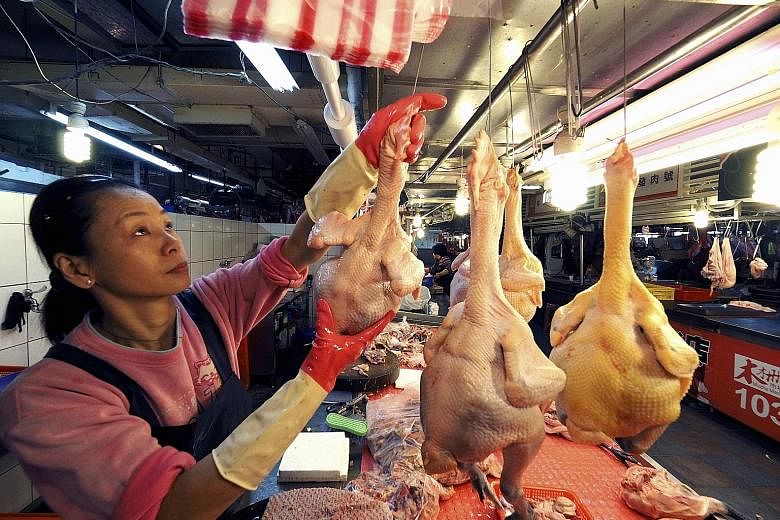BEIJING • Bird flu infection rates in Chinese poultry farms may be far higher than previously thought because the strain of the deadly virus that has killed more than 100 people this winter is hard to detect in chickens and geese, animal health experts say.
"There are very few, if any, clinical signs when this (H7N9) virus infects birds, and that's the main reason we're not seeing reporting coming from poultry farms in China," said Mr Matthew Stone, deputy director general for international standards and science at the World Organisation for Animal Health.
Poultry that have contracted the H7N9 strain of the avian flu virus show little or no sign of symptoms. That means any infection is only likely to be detected if farmers or health authorities carry out random tests on a flock, according to experts. But in humans, it can be deadly. That is different to other strains, such as the highly pathogenic H5N6 that struck South Korean farms in December, prompting the government to call in the army to help cull some 26 million birds. But that strain did not kill people.
There have been multiple outbreaks of bird flu around the world in recent months, with at least half a dozen different strains circulating. For now, H7N9 is thought to be relatively difficult to spread between people. China's Centre for Disease Control and Prevention said the vast majority of people infected by H7N9 reported exposure to poultry, especially at live markets.
As many as 79 people died from H7N9 bird flu in China last month alone, up to four times higher than the same month in past years.
In Taiwan, a ban on the transport and slaughter of poultry to counter the recent avian influenza outbreak will stay in effect. So far this year, as many as 18 poultry farms have been hit by avian influenza virus strains including H5N6, H5N2 and H5N8.
REUTERS

